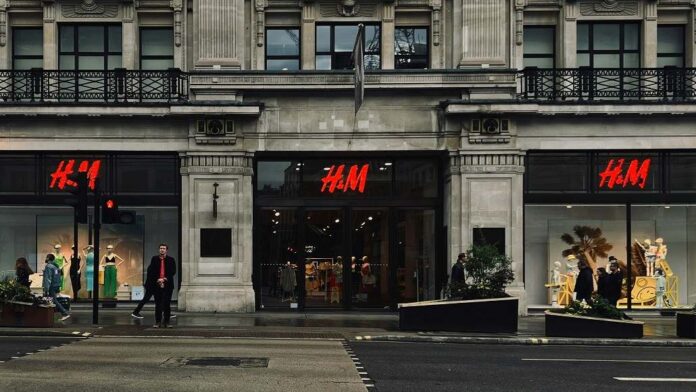As tariffs continue to disrupt global trade and reshape fashion supply chains, Swedish retail powerhouse H&M is making a decisive move: keeping prices steady in the United States while its major competitors, such as Zara and Shein, opt to raise theirs. This strategic choice aims to attract value-seeking American consumers during a time when the fast-fashion sector grapples with inflation, shifting consumer preferences, and geopolitical factors driving up import expenses.
In an interview, H&M CEO Daniel Erver highlighted the complexities of the current market, referring to the U.S. landscape as “turbulent” due to fluctuating tariffs. “The challenge in the coming months,” Erver noted, “is to understand consumer sentiment, which we see has dropped in the U.S. due to all the turbulence, with the fact that some [competitors] will be forced to raise prices more, and what that creates as an opportunity.”
Retail analytics firm Edited has reported a 28% increase in average prices at Zara across various categories, including dresses, jeans, and shirts over the past year. In contrast, H&M has managed to reduce prices by an average of 3%, making it a notable exception within a sector facing rising costs.
Shein, another major competitor, has also increased its prices following the U.S. government’s rollback of “de minimis” duty exemptions, which previously allowed for tariff-free entry of low-cost items. This adjustment has led to a deceleration in customer growth for the e-commerce giant.
Strategic Patience Amid Rising Costs
H&M’s decision to maintain prices comes with inherent risks, as the second-largest publicly traded fashion retailer is absorbing higher costs, which could pressure profit margins that are already tight. However, analysts believe this pricing strategy may serve as a wise long-term approach. “Maybe they are going to raise prices in the U.S.,” suggested Alexander Siljestrom of Pareto Securities, “but just to a lesser extent compared to competitors.”
H&M seems to be carefully balancing its pricing strategy to attract customers from other brands without jeopardizing its financial health.
Adapting Supply Chains: Moving Away from China
A significant factor enabling H&M to maintain its pricing strategy is its evolving supply chain. To mitigate the effects of tariffs—particularly on imports from China—the company has spent the last 18 months consolidating its supplier network, opting for larger vendors with diversified manufacturing capabilities.
This strategy has led H&M to shift its sourcing away from high-tariff China toward more cost-efficient alternatives like Bangladesh. Additionally, through its “nearshoring” initiative, the brand is investing in suppliers closer to key markets, including Turkey, Egypt, Jordan, and Morocco for Europe, with plans to launch stores in Brazil in the latter half of 2025.
Future-Proofing with Flexibility
Erver pointed out that H&M’s supply chain strategy is built for flexibility, maintaining supplier capacity below 100% to quickly increase production of successful items. This agility is crucial in the rapidly changing retail environment, where consumer preferences can shift unexpectedly.
Currently, H&M operates around 500 stores in the U.S., its second-largest market after Germany, accounting for 13% of its total sales in 2024. This presence, combined with a stable pricing strategy, positions the retailer to strengthen its foothold in the U.S. market as competitors raise their prices and potentially alienate budget-conscious consumers.


































